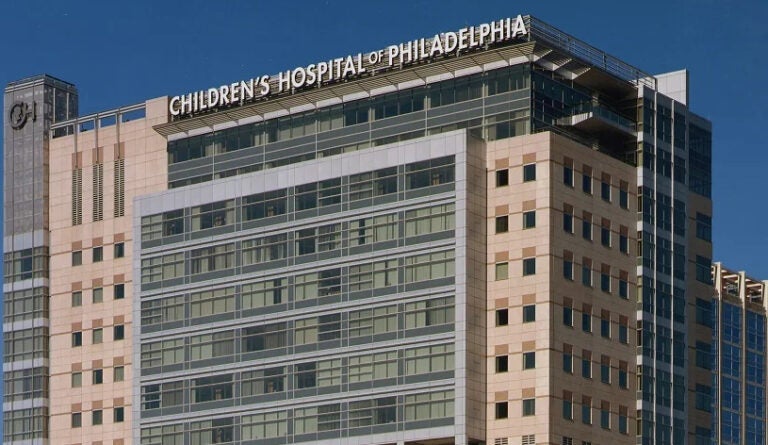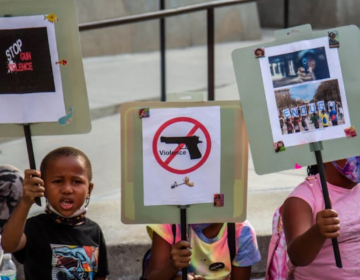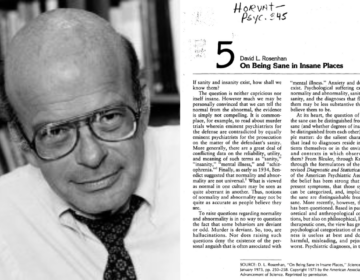In Philly, only 1 qualified psychiatrist is available per 1,000 potentially at-risk children
The mental health crisis is moving faster than providers can catch up, says one CHOP doctor.

The exterior of CHOP in Philadelphia. (Children's Hospital of Philadelphia)
From Philly and the Pa. suburbs to South Jersey and Delaware, what would you like WHYY News to cover? Let us know!
In Philadelphia, over 66,000 children are considered potentially at risk of having mental and behavioral disorders — but there are only 60 qualified psychiatrists to provide treatment, according to a new report compiled by the American Academy of Child and Adolescent Psychiatrists.
That’s a ratio of 1,100 at-risk youths to one child and adolescent psychiatrist.
“The pandemic really amplified the mental health crisis, especially in youth,” said Dr. Consuelo Cagande, the Division Chief for Community Care and Wellness at the Children’s Hospital of Philadelphia. “Now it really is moving at a quicker pace than we can catch up in having child psychiatrists trained on time to meet the needs and the demands.”
Cagande and her team at CHOP are currently working with Girard College, a preparatory school in the Sharswood neighborhood, to provide clinical services to students in grades 1 through 12. Similar partnerships with other local schools are in the works.
“But I think primary care physicians are really key to help destigmatize and also address access to care when there’s such a shortage of child psychiatrists,” said Cagande.
Still, Cagande said those stark numbers won’t materially change until institutions incentivize more medical students to take on the additional requirements (and often tuition costs) needed to treat kids with mental and behavioral health disorders.
While other medical specialties have similar barriers to entry, Cagande said psychiatry faces other challenges. Because mental health was traditionally put on the back burner for patients and doctors alike, Cagande said many medical students aren’t as drawn to psychiatry at first.
It doesn’t help that it remains harder to get reimbursed for mental health care costs.
“Sometimes we’re not reimbursed as equally as the inequity of reimbursements with other physical health billings. There’s the [Mental Health Parity and Addiction Equity Act] that was passed since 2008, but it hasn’t really been implemented well. So that kind of discourages some people from going into child psychiatry because of that.”
Of the 25 biggest cities in the United States, Philadelphia has the fourth-best ratio of potentially at-risk youths per child and adolescent psychiatrist — behind Washington, D.C., Boston and New York City.
Editor’s note: Data from this article uses information from the American Academy of Child and Adolescent Psychiatry and the United States Census Bureau.

Get daily updates from WHYY News!
WHYY is your source for fact-based, in-depth journalism and information. As a nonprofit organization, we rely on financial support from readers like you. Please give today.






